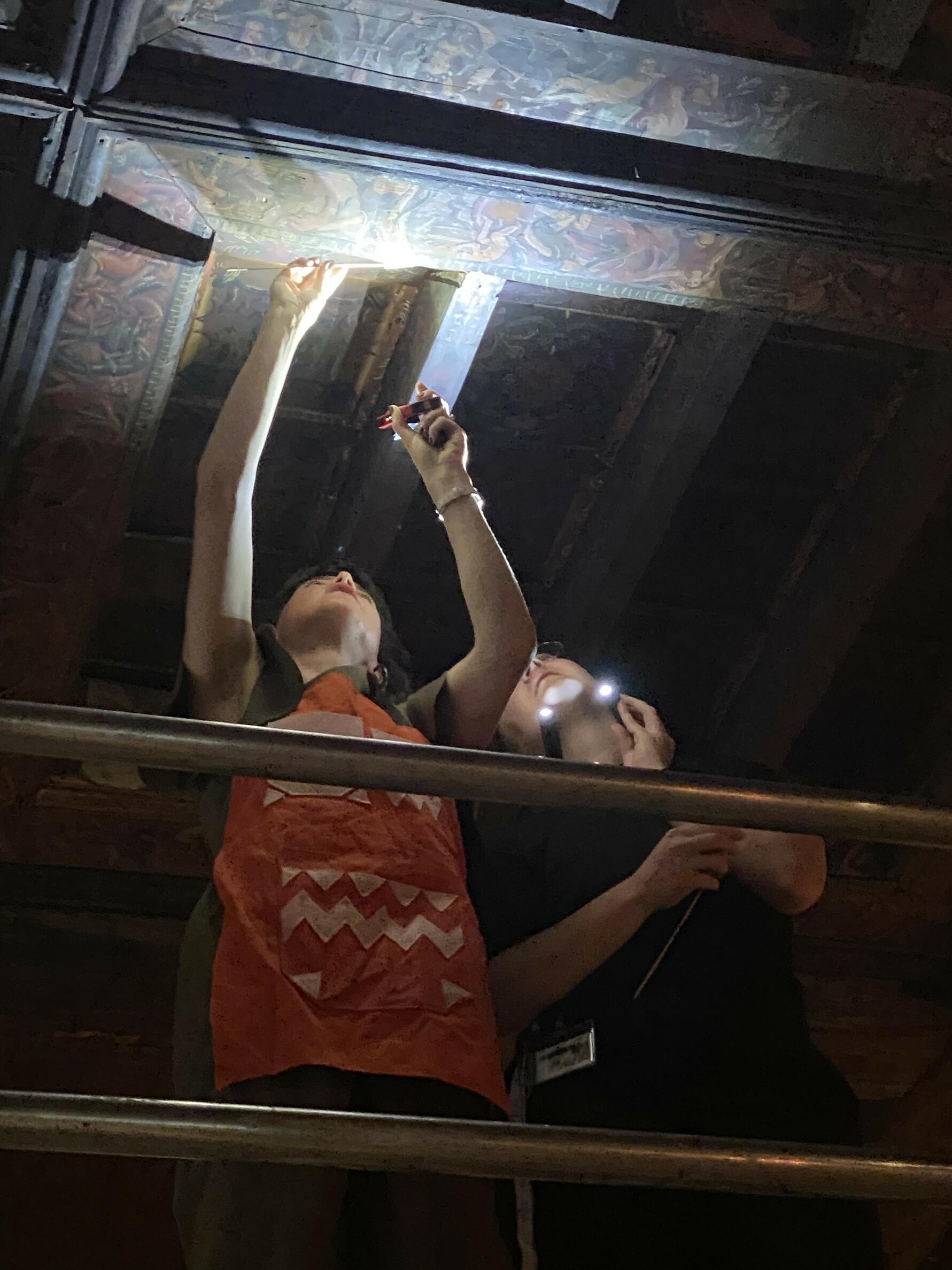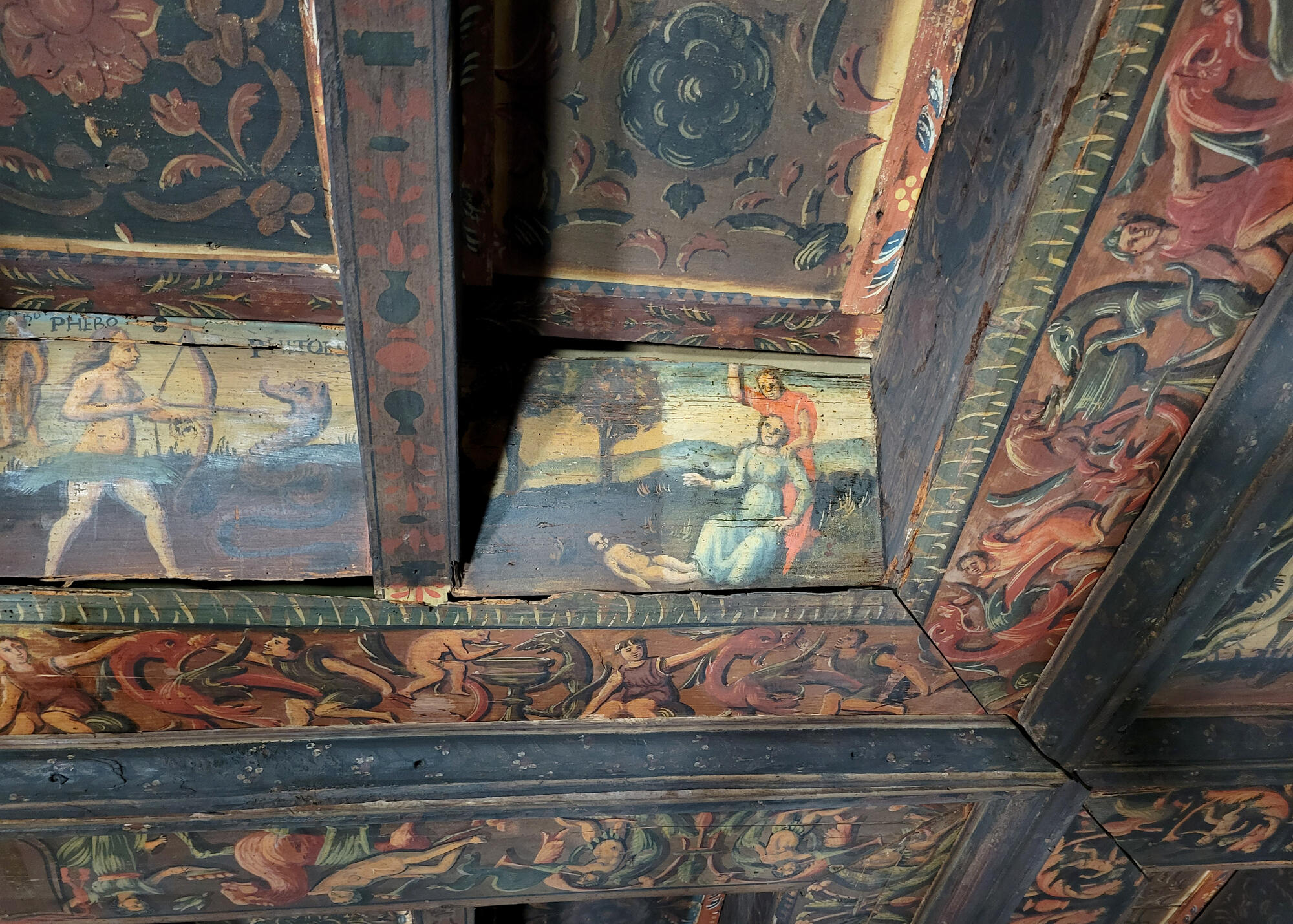When you step into the Dutch Room at the Isabella Stewart Gardner Museum, your eyes might be drawn to Rembrandt's Self Portrait, Age 23, or the chilling site of the empty frames left behind in the notorious theft. However, the largest piece in the room may have escaped your notice. It does not hang on the walls around you, but rather above you: a 16th-century Italian coffered ceiling that spans the length and width of the room. This extraordinary work is made up of 15 recessed bays densely decorated with small panels depicting biblical and mythological scenes, coats of arms, and bordered with beams decorated with additional flora and fauna motifs. A century-old layer of dust and grime now masks the vibrant colors and patterns, reducing the distinctive features and vignettes into a drab mass of brown that is no longer characteristic of Isabella Stewart Gardner's bold vision for her Museum.
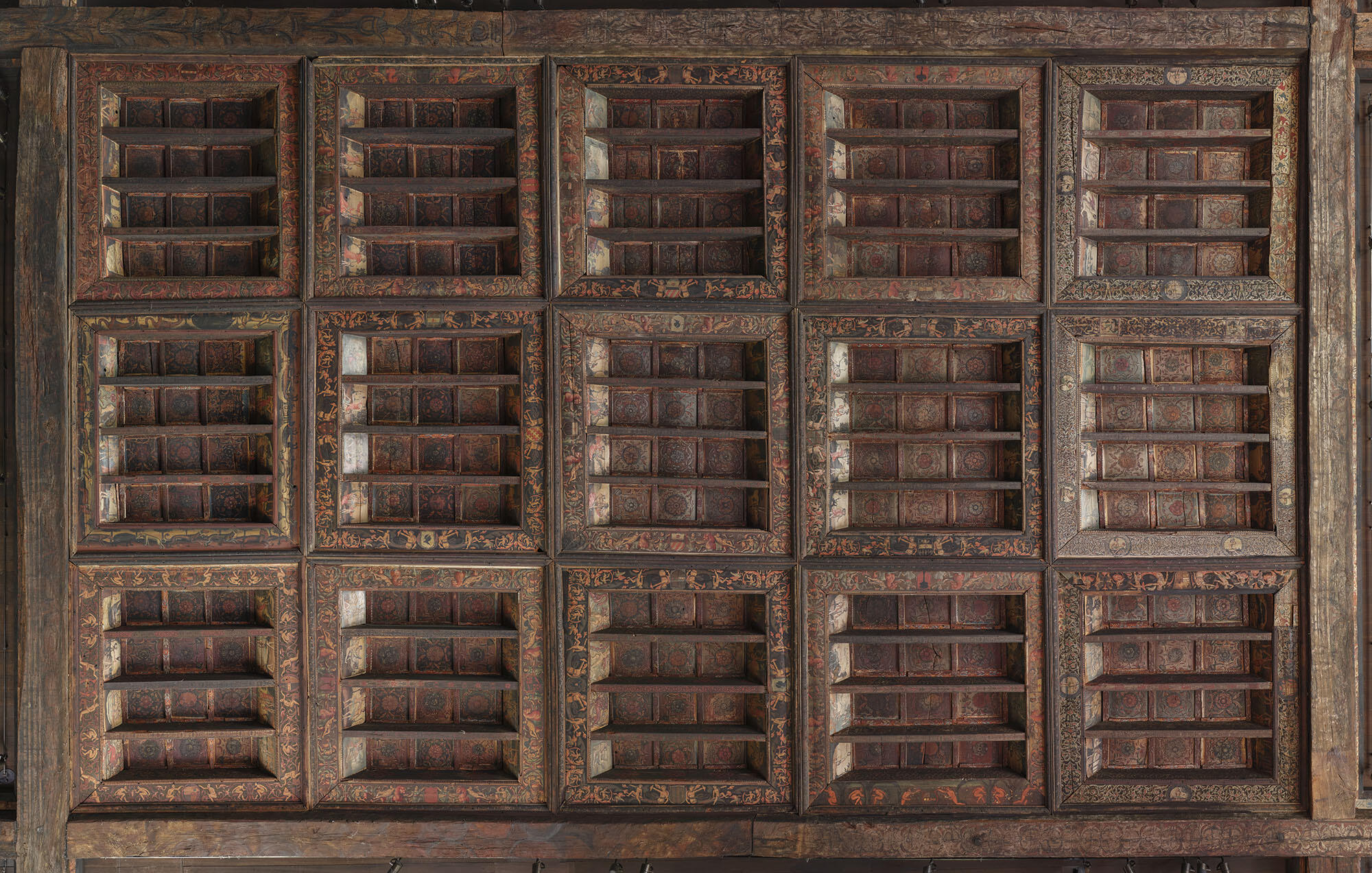
Isabella Stewart Gardner Museum, Boston (F21c5). See it in the Dutch Room
Italian, Orvieto, Ceiling, about 1500. Painted wood, 890 x 587 cm (350 3/8 x 231 1/8 in.)
Dutch Room Restoration
As part of the Dutch Room’s current restoration, the Conservation team will bring new life to the ceiling. Due to its immense scale, cleaning the entire surface is expected to take at least six months—a meticulous and multistep process scheduled to begin in the spring of 2025. While treating the work, we will consult with our curatorial colleagues to closely examine and research aspects of the painted ceiling that remain mysterious, including enigmatic scenes set into the recessed bays that are barely visible from the floor below. The conservation effort promises to not only brighten the colorful patterns and intricate designs, but also uncover its historical journey and relevance to the Museum.
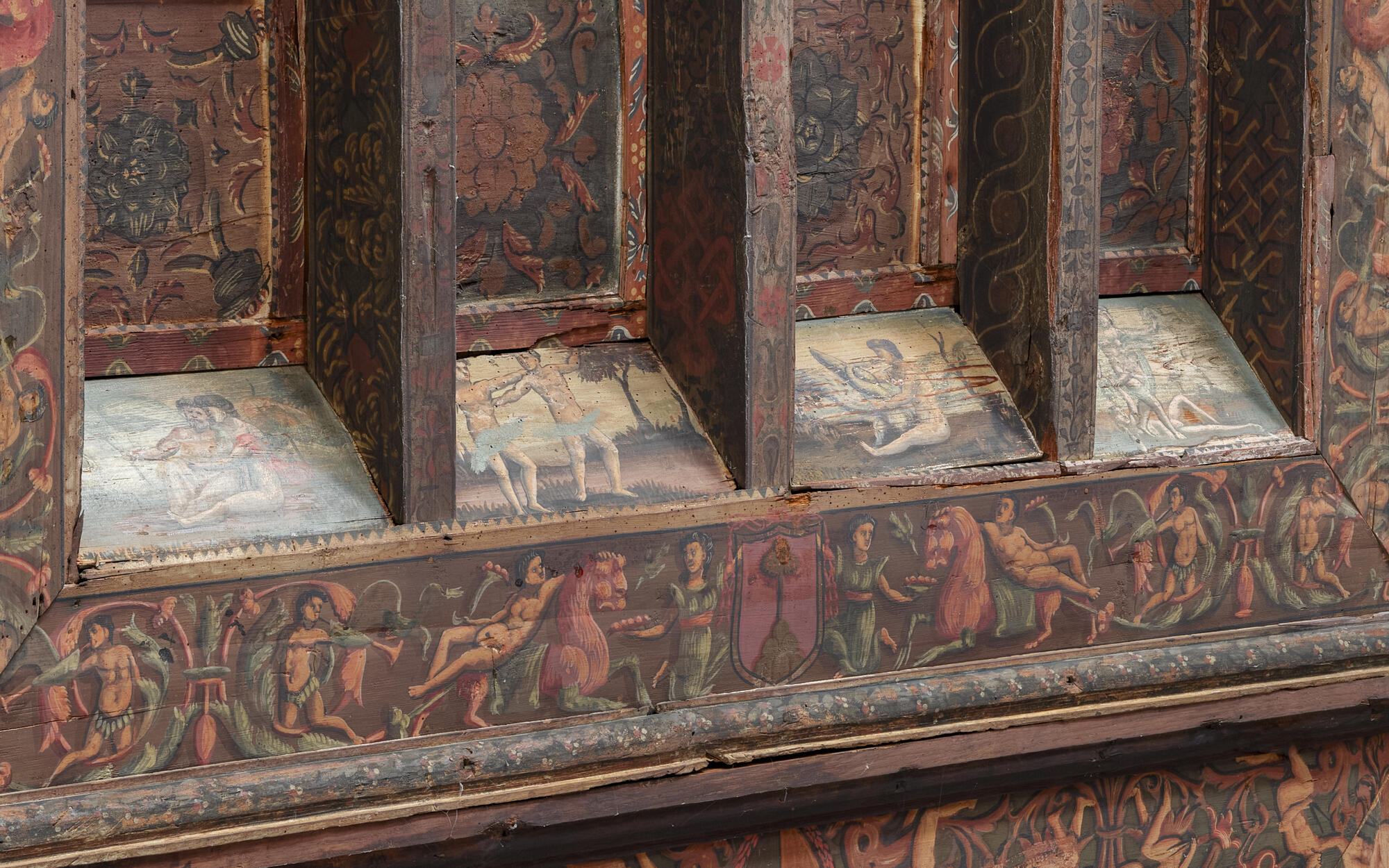
Isabella Stewart Gardner Museum, Boston (F21c5)
Detail of ceiling, Italian, Orvieto, about 1500. Painted wood.
Isabella Stewart Gardner acquired the historic ceiling in 1897 from the dealer Richard Norton–the son of leading Harvard art history professor Charles Eliot Norton, with whom Gardner studied. He discovered it in Orvieto, a small town in central Italy. In a letter dated November 7, 1897, Norton described the ceiling in detail and included a photo illustrating a section of the piece. Later, Isabella tucked these into a page of her handmade Museum catalog. Not long after, on December 17th, 1897, Isabella received an apologetic letter – there were some “...rather complicated expenses in regard to getting the beams cut and new ones inserted….” Transporting such a large work was time-consuming and expensive. Ultimately, he wrote that the ceiling had been dismantled and packed into 15 crates to be shipped by steamboat from Naples to Boston via Liverpool.
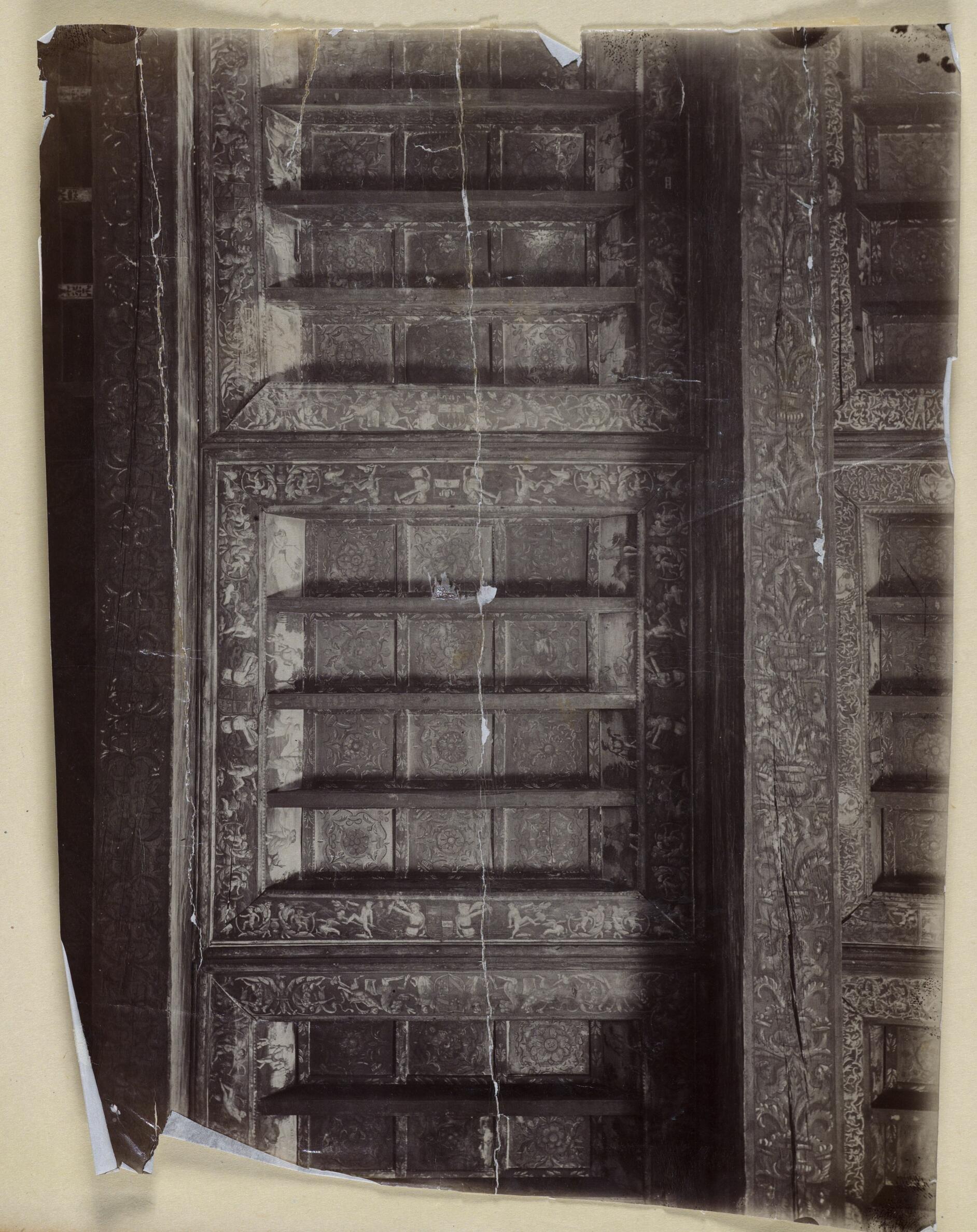
Isabella Stewart Gardner Museum, Boston (enclosed in v.1.b.4.7)
Archival photograph sent to Gardner by her dealer, Richard Norton, depicting a detail of the decorative ceiling in its original location.
The ceiling waited in storage until Gardner had it installed in the Dutch Room. In June 1901, Willard T. Sears, the lead architect overseeing the construction of the Palace (called Fenway Court at the time) recorded Isabella’s apparent direct involvement in the installation of the ceiling:
June 26, 1901–Wed.
Met Mrs. Gardner at the Fenway house this forenoon. Mr. Letson says she stopped his men from working in the Gothic room, owing to dust and dirt dropping down in the room below when she was oiling and putting up the old painted ceiling.

Isabella Stewart Gardner Museum, Boston (ARC1954.2.1)
Handwritten note in Willard T. Sears’ diary dated June 26th, 1901, mentioning the Dutch Room ceiling installed in the Palace
Applying an oil layer would have brought out the lively saturated colors of the highly decorated painted wood, and given added gloss to the surface. A photo taken in 1903 shows the ceiling freshly cleaned, and its detail shines through–even in black and white. Unfortunately, over time, it seems that this oil layer has oxidized and darkened, obscuring the details Garder specifically wanted to highlight.
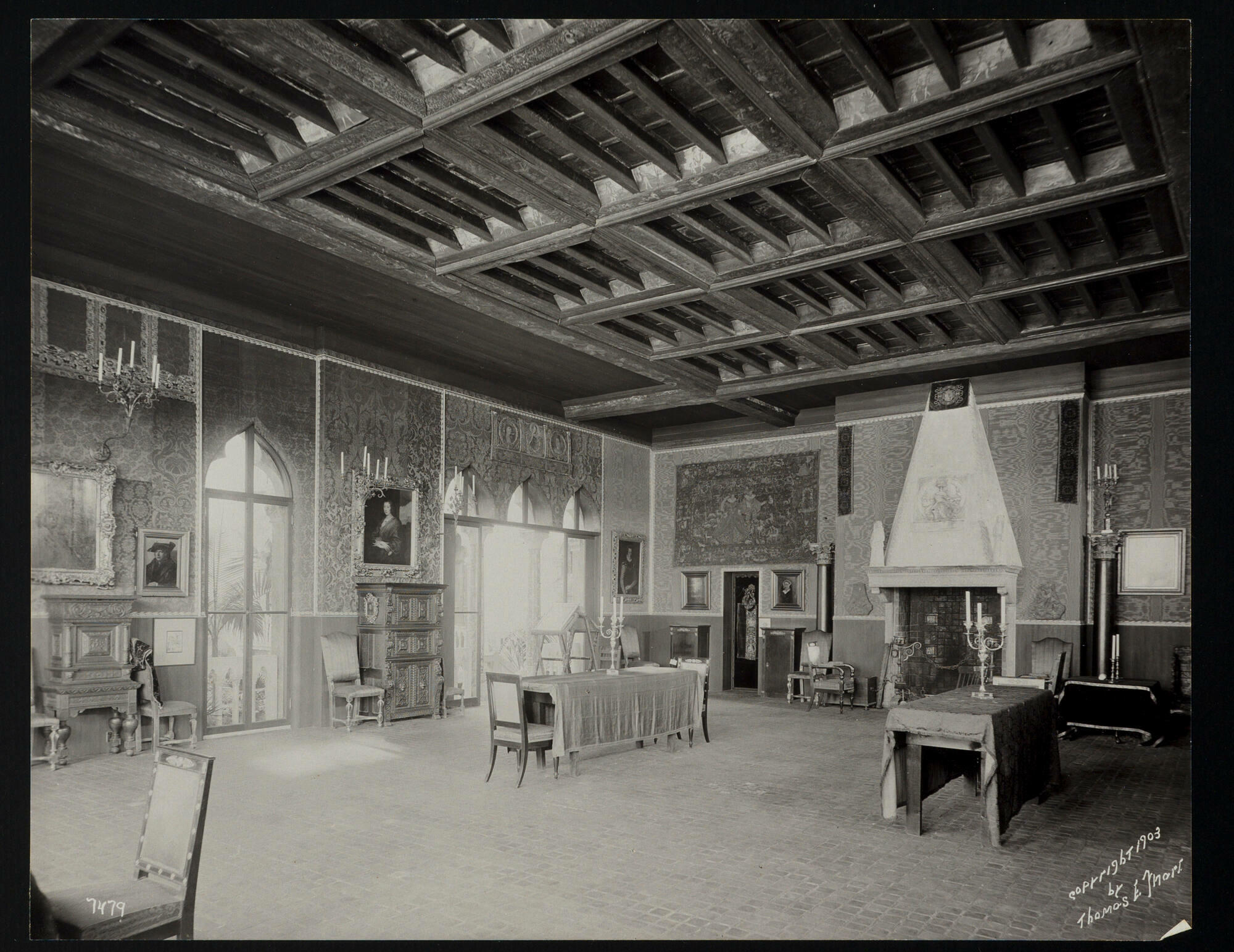
Isabella Stewart Gardner Museum, Boston. Photo: T. E. Marr & Son Photography.
A 1903 photograph of the Dutch Room from the southwest corner, showing the ceiling shortly after installation in the Palace.
On a recent Tuesday, when the Museum was closed to the public, the conservation team set up scaffolding to access the ceiling. We performed cleaning tests to determine a safe way to remove grime and yellowed coating. The black grime lifted easily. However, the yellowed coating is stubborn. We took a microscopic sample for scientific analysis to confirm the material type, which will guide the next stage of the cleaning process.
UNEXPECTED DISCOVERIES
Even this first close examination before cleaning provided more information. For example, coats of arms represented several different prominent Italian families, including the Orsini of Rome, the De Monte of Rome and the Medici of Florence. Strangely, some of the mythological scenes and coats of arms are repeated but varied, suggesting the work of multiple artists. We also observed the extent of a campaign of heavy-handed censoring where hasty, broad strokes of gray paint covered details that were deemed inappropriate. We are not yet sure whether this occurred before Gardner purchased the work or if she did it herself.
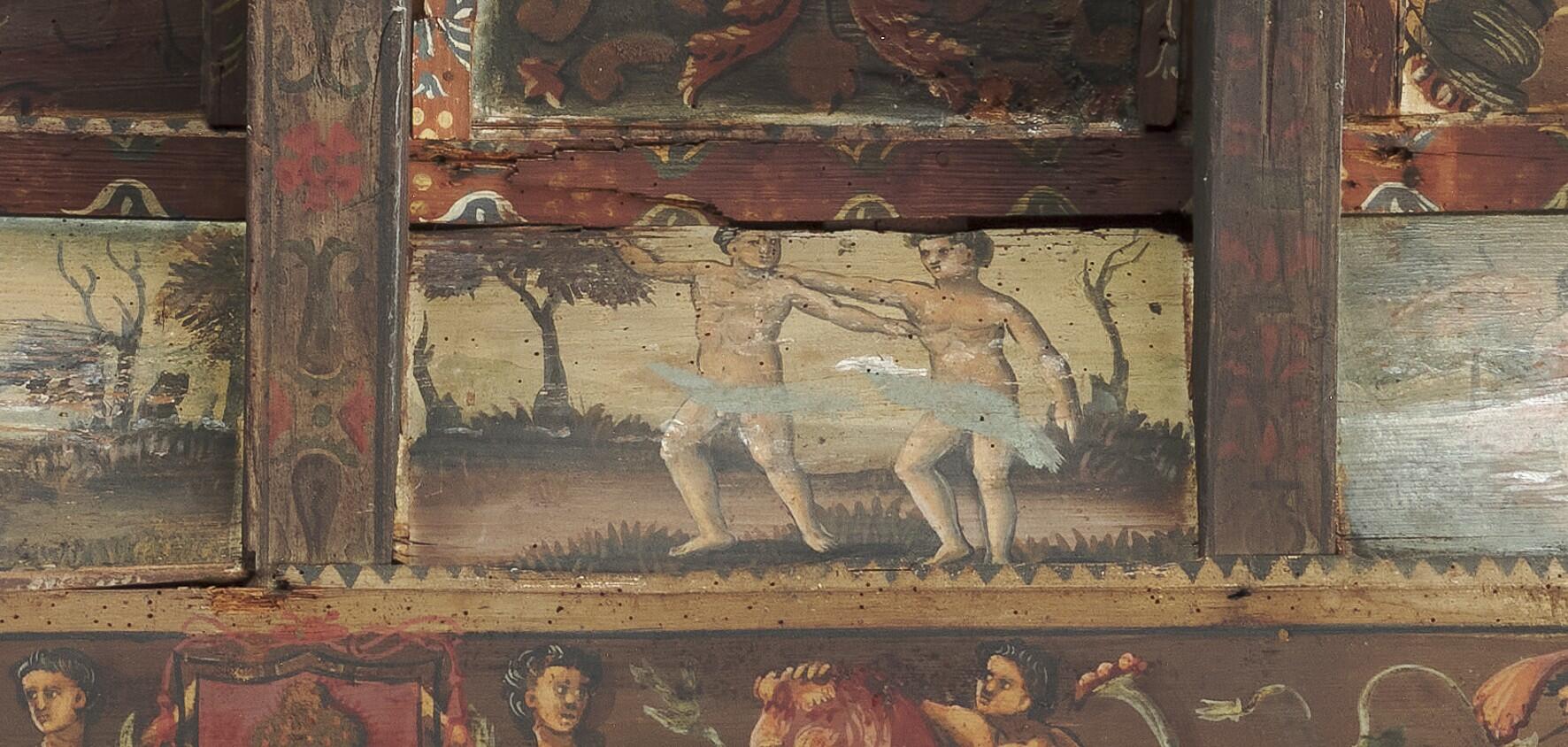
Isabella Stewart Gardner Museum, Boston (F21c5)
A detail from the decorative ceiling showing narrative panels with figures that have been censored with broad strokes of blue-grey paint.
As we climbed down the scaffolding at the end of that Tuesday, we had many more questions than answers. What was the exact original location for this ceiling? Why did Gardner want this historic ceiling in her Museum? Was it merely the beauty of the design that caught her eye or was it something else? Were these types of decorated ceilings prevalent in Italy, and are there still examples in their original locations? What accounts for the repetition in the figures and coats of arms? When exactly did the censoring happen? These are just some of the questions we will be keeping in mind as we embark on the adventure of restoring this ceiling to its former glory over the coming months.
